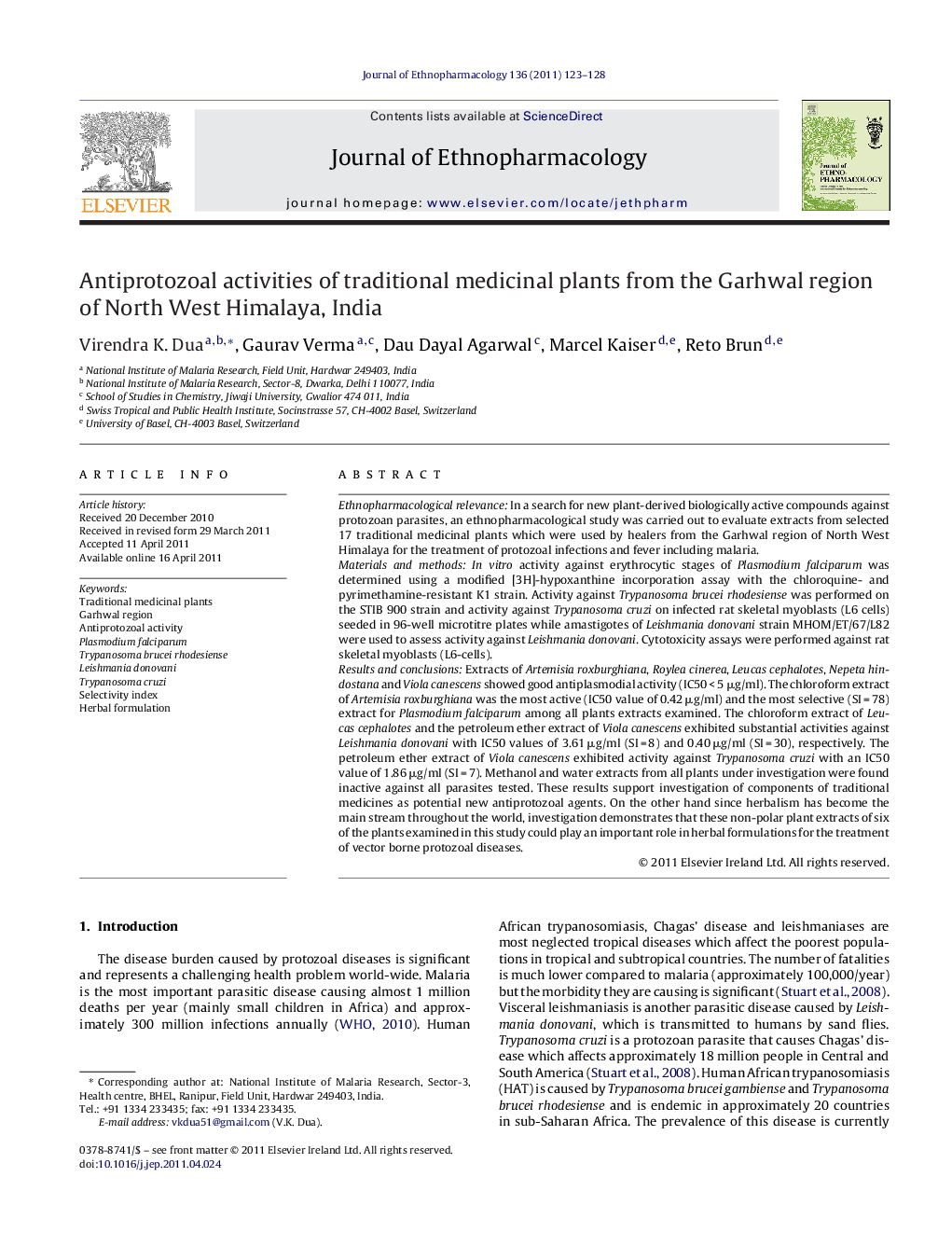| کد مقاله | کد نشریه | سال انتشار | مقاله انگلیسی | نسخه تمام متن |
|---|---|---|---|---|
| 2545711 | 1123995 | 2011 | 6 صفحه PDF | دانلود رایگان |

Ethnopharmacological relevanceIn a search for new plant-derived biologically active compounds against protozoan parasites, an ethnopharmacological study was carried out to evaluate extracts from selected 17 traditional medicinal plants which were used by healers from the Garhwal region of North West Himalaya for the treatment of protozoal infections and fever including malaria.Materials and methodsIn vitro activity against erythrocytic stages of Plasmodium falciparum was determined using a modified [3H]-hypoxanthine incorporation assay with the chloroquine- and pyrimethamine-resistant K1 strain. Activity against Trypanosoma brucei rhodesiense was performed on the STIB 900 strain and activity against Trypanosoma cruzi on infected rat skeletal myoblasts (L6 cells) seeded in 96-well microtitre plates while amastigotes of Leishmania donovani strain MHOM/ET/67/L82 were used to assess activity against Leishmania donovani. Cytotoxicity assays were performed against rat skeletal myoblasts (L6-cells).Results and conclusionsExtracts of Artemisia roxburghiana, Roylea cinerea, Leucas cephalotes, Nepeta hindostana and Viola canescens showed good antiplasmodial activity (IC50 < 5 μg/ml). The chloroform extract of Artemisia roxburghiana was the most active (IC50 value of 0.42 μg/ml) and the most selective (SI = 78) extract for Plasmodium falciparum among all plants extracts examined. The chloroform extract of Leucas cephalotes and the petroleum ether extract of Viola canescens exhibited substantial activities against Leishmania donovani with IC50 values of 3.61 μg/ml (SI = 8) and 0.40 μg/ml (SI = 30), respectively. The petroleum ether extract of Viola canescens exhibited activity against Trypanosoma cruzi with an IC50 value of 1.86 μg/ml (SI = 7). Methanol and water extracts from all plants under investigation were found inactive against all parasites tested. These results support investigation of components of traditional medicines as potential new antiprotozoal agents. On the other hand since herbalism has become the main stream throughout the world, investigation demonstrates that these non-polar plant extracts of six of the plants examined in this study could play an important role in herbal formulations for the treatment of vector borne protozoal diseases.
Sixty-eight extracts from traditional medicinal plants from the Garhwal region were evaluated for antiprotozoal activity. Results demonstrated that extracts of six plants possess good antiprotozoal activity with out any cytotoxicity and could play an important role in herbal formulations for the treatment of vector borne diseases.Figure optionsDownload as PowerPoint slide
Journal: Journal of Ethnopharmacology - Volume 136, Issue 1, 14 June 2011, Pages 123–128